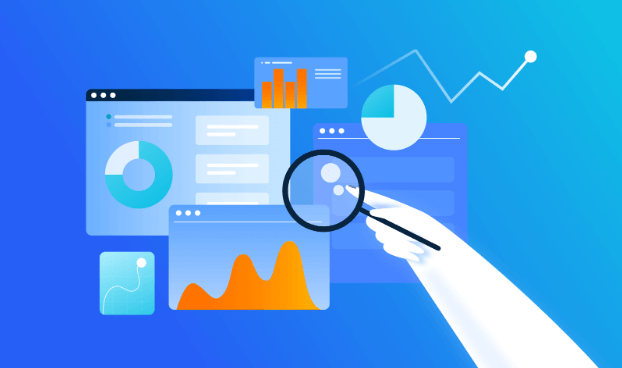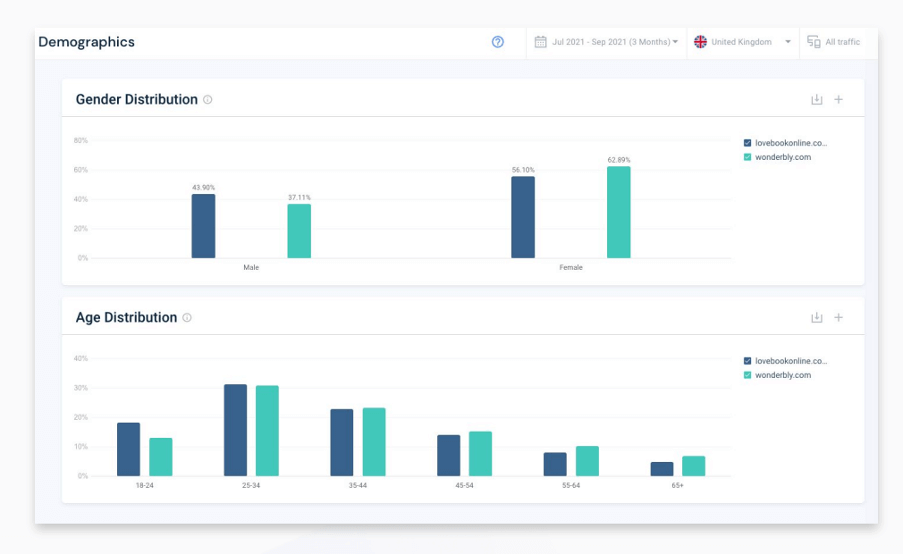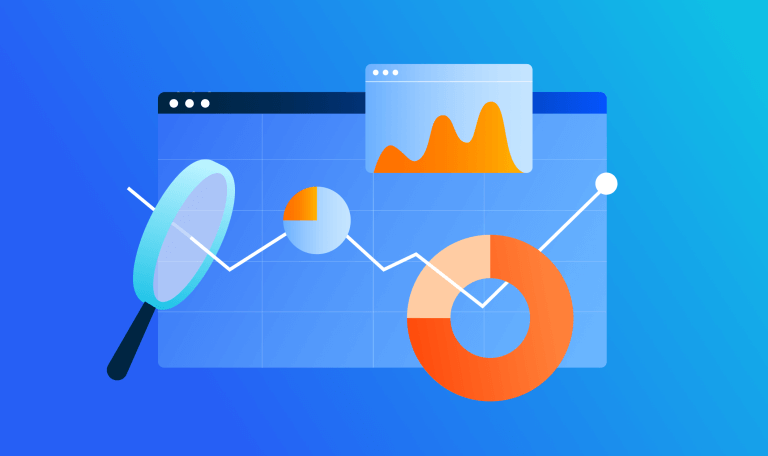Data-Driven Decision-Making: Unlocking Sustainable Success

In the battle of instinct vs insight, there’s clear evidence that data-driven decision-making pays off.
A McKinsey study into data-driven decision-making found that organizations using data to make decisions are more likely to be profitable and can more effectively retain and acquire customers vs those who fail to use this approach.
Whether you’re launching a new product, investing in a promising startup, or designing a marketing campaign, data-driven decision-making is a necessity few can afford to ignore.
In this article, we’ll show you why making decisions based on data is critical, how to implement it in your organization, and give an example of data-driven decision-making.
What is data-driven decision-making (DDDM)?
Data-driven decision-making is the process of making decisions based on reliable data, insights, and facts. It’s a decision-making approach that collects, analyzes, and interprets data around critical KPIs and can be used as a foundation for all business decisions. Using research as part of the validation process for any initiative makes good business sense.
Today, 90% of enterprise professionals report that data and analytics are key to their core transformation initiatives.
Modern consumers are leaving more data traces online than ever, allowing businesses to study everything from their interests and behavior to purchase preferences and brand associations. With more comprehensive, reliable, and accurate data, organizations can make data-driven decisions faster than ever – helping them pivot and flex at pace.
The benefits of data-driven decision-making
Making data-driven decisions allows organizations to identify trends, formulate new services or products, do accurate forecasting, and establish the most effective channels for growth. It can impact almost every area of an organization, from customers, employees, recruitment, sales, and revenue.
1. Achieve a higher ROI
Data-driven decisions directly impact company profitability. Doing it provides relevant insights that can help increase sales and decrease losses. When choices are based on solid numbers rather than instinct or personal preferences, a company can make decisions logically and with greater confidence.
2. Shift from reactive to proactive
Data provides insights that enable you to identify trends and patterns and accurately forecast the demand. With the right data, you can plan more confidently, calculate risks, and discover opportunities others can’t see.
This allows you to be more proactive and make early moves that others won’t. It’s just like having night-vision glasses in the dark – you see things others cannot, and you react and respond accordingly.
3. Improve customer experience
Satisfied customers use your service for longer, spread the word about your business, and become advocates for your brand. A data-driven decision-making approach helps you boost customer satisfaction levels by:
- Regularly measuring customer satisfaction
- Gathering feedback
- Spotting trends
- Identifying dissatisfaction sources
- Taking steps to counter dissatisfaction
- Optimizing processes and services to improve service standards
Without data, it’s hard to truly know what customers feel about your product. When your decisions are based on solid data, you know where you stand and how you can better meet and exceed customer expectations.
4. Gain a competitive advantage
Staying one step ahead of competitors is the hallmark of all successful companies. Where your market is concerned, knowledge is power. A data-driven decision-making approach allows you to closely monitor your competitors actions, campaigns, and tactics.
As a result, you’re better positioned to predict their moves and counter their strategies by making more timely and informed decisions.
Data-driven decision-making example
This sample shows competitive research in action. It was shared with us by Wonderbly, an international firm serving 6 million customers. By analyzing the audience demographics of a key rival and looking at gender and age distribution, it was able to identify the competition was doing a better job at attracting a younger audience.
Wonderbly used Similarweb to view rivals’ website demographics alongside their own. Here’s what it was able to determine.
Wonderbly was winning with the female audience, with 62% vs 56% in its favor. However, its rivals were better at attracting a male audience, and its share in the 18-24 age range was just 12% vs 19%. Showing a clear opportunity to do more to reach both younger and male personas.
Impact: It developed a new audience profile and significantly changed future campaigns. It was then able to grow its business and attract more new customers.
5. Greater confidence in decision making
Data-driven decisions remove uncertainty, minimize gray areas, and enable you to see things clearly. Your decisions aren’t guesswork or wishful thinking. It comes from taking calculated steps based on insights from comprehensive data collected across your customer’s life cycle.
Naturally, this means you have confidence in your decisions which trickles down to your teams and allows them to follow your instructions with greater conviction.
6. Faster access to insights
In today’s ever-changing markets, consumer behaviors shift at lightning speed; emerging players appear and grab market share at a moment’s notice, and disruptive technologies impact entire industries in an instant.
Having a faster speed to insight can help your business respond to changes much quicker, compete, and stay ahead of the curve. Data helps you spot these changes while there’s still time to do something about it; without faster access to insights, you risk being left behind.
Example of data-driven decision-making with Similarweb
Sticking with Wonderbly as an example, here are a few more examples of dddm in action.
- Entering new markets
Why: Entering a new market can yield growth for almost any business. However, it requires significant investment to undertake. Using data to drive decisions like this can help any organization accurately forecast future growth and market potential for a new product or service.
How: In this dddm example, Wonderbly used the seasonal keyword trends element of Similarweb to discover where its rivals were gaining website traffic from different channels. More specifically, it could pinpoint the exact keywords used across paid search channels (anniversaries and weddings) that were currently unaddressed by its product set.
In this snapshot taken from Similarweb keyword seasonality, you see traffic leaders for specific keyword sets, their seasonality, traffic share, and volume, along with relevant CPC data. It demonstrates where rivals are using paid ads to win traffic share.
Result: Being able to demonstrate the success of its rivals, in particular, the significant consumer interest in a channel, it was able to develop a new product line. It achieved a revenue increase of 69% as a direct result of entering a new market.
This is just one example of data-driven decision-making in action. But there are many ways you can use software like Similarweb Research Intelligence to uncover the traits and tactics of successful players in your market.
If you’d like more data-driven decision-making examples, head to our customer success stories page. Here, you can view countless testimonials and dddm examples from clients.
How to practice data-driven decision-making in your business
To develop a culture of data-driven decision-making in your company, there’s a process to follow and a mindset to shift. Everyone can benefit from using data to make decisions from the most experienced business leader to those just entering the workplace.
1. Set clear goals that align with business objectives
What do you want to achieve with data? That’s the first question you should answer before investing in data analytics or any other solution. For example, you might be looking to optimize your processes, find loopholes, and identify your most profitable sales channels. Or you might be looking for more audience insights to inform your marketing or product development strategy.
Whatever it is, you need to set clear goals to measure and track key metrics over time.
2. Conduct market research
Consult your internal teams and decision makers to understand the questions they want data to answer, their current data sources, and how they want to improve them.
Based on their feedback, conduct market research to find ways other companies handle these challenges. This would help you understand the data sources you need to improve and the market research tools required to meet your company’s decision-making needs.
3. Collect and prepare data
To analyze and interpret data, you must first identify all your existing and potential data sources and build a centralized data repository. This can be challenging if your decision-makers currently use data from disconnected sources. In particular, there’s the risk of data duplication and inaccuracy.
So, you must ensure that your data is credible and relevant to facilitate effective decision-making.
4. Analyze your results, look for patterns, and explore
Now that you’ve collected and organized your data, analyze it from relevant angles to find answers to your questions. This is where data visualization and dashboarding come in handy. Using charts, graphs, trend lines, and other visualization types, you can make your data more accessible and easier to understand.
5. Develop insights
Representing data with visualization is one thing but summarizing its core findings and insights requires deeper analysis. You must connect the dots between the various data sets to see if they answer your questions and provide insights for decision-making.
6. Collaborate and make decisions
Once you’ve developed insights and have data-backed answers to your questions, it’s time to communicate them with your teams and other stakeholders. By using data storytelling, you will help your audience understand the context behind your data, and see the bigger picture and details behind your decisions.
It also helps to bring the key decision-makers in your company on board and makes your data-driven decision-making process more transparent.
Wrapping up DDDM
Data-driven decision-making is no longer a choice. Businesses must invest in data collection, processing, and management to equip their decision-makers with relevant, credible, and accurate insights.
Similarweb Digital Research Intelligence gives you a ready-made platform to access insights and data that can revolutionize how your business makes decisions. It’s trusted and used by some of the world’s biggest brands, and if you click through below, you can get a 7-day trial.
Why Similarweb?
Similarweb’s suite of digital intelligence solutions offers unbiased, accurate, honest insights you can trust for analyzing any industry, market, or company.
- Methodologies used for data collection are robust, transparent, and trustworthy.
- It updates dynamically–giving you the freshest data about an industry or market.
- Filter and refine results according to your needs.
- Clear presentation of data via an easy-to-use, intuitive platform.
- Data is available via an API, so you can plug into platforms like Tableau or PowerBI to streamline your analyses.
FAQs
What are data-driven decision-making examples?
An example of data-driven decision-making is using digital intelligence tools to look at existing demand in a market for a specific product or service before deciding to enter it. Another example of DDDM is using competitive intelligence to look at specific keywords to target in a PPC campaign before investing.
Why is data-driven decision-making important?
Data-driven decision-making gives organizations the insights to make transparent, credible, and rational decisions. It places fact before fiction and ensures that key decisions are justified with real data.
How do you make data-driven decisions?
Start by understanding your business needs and collecting relevant data from credible sources. Then, you analyze and organize that data to find actionable insights. Finally, you share your findings with the relevant stakeholders and make informed decisions.
What are the 6 steps of data-driven decision-making?
- Goal alignment
- Market research
- Data collection
- Data analysis
- Developing insights
- Decision making
Track your digital metrics and grow market share
Contact us to set up a call with a market research specialist














